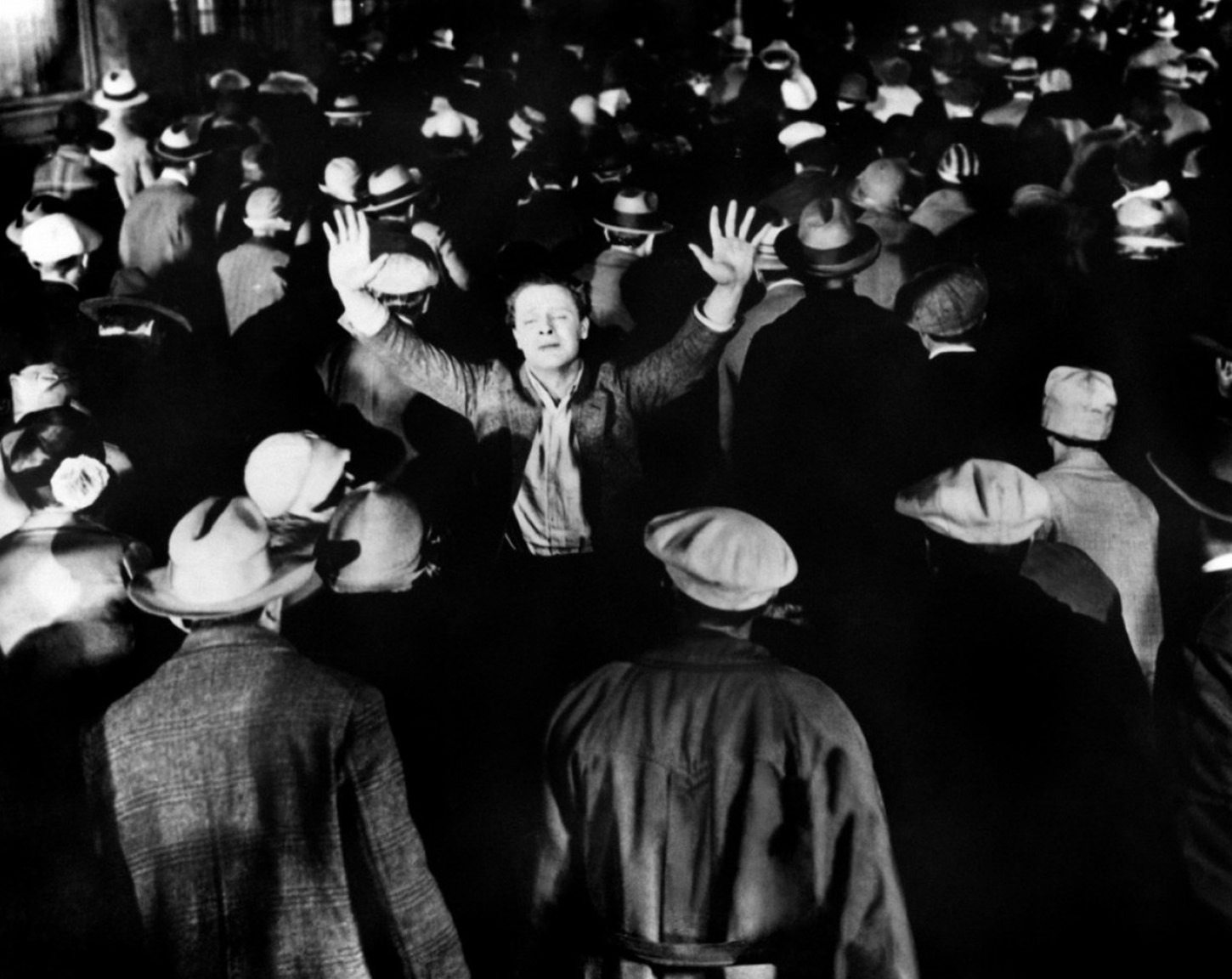There are all sorts of divides between us and the early silent days of Hollywood: assumptions about gender and race; the differences in our ability to fill in what is unsaid (to put back in the implicit sex they had to leave out, for instance); and even the ability to perform the simple act of holding an actor’s face in mind for the seconds until the title card comes up, then retroactively making the face make sense with the words.
But I wonder if we have also lost something bigger that is omnipresent in early Hollywood: a sense of “the crowd”.
The idea of a crowd is, obviously, the core element of King Vidor‘s silent The Crowd (1928). The melodrama’s hero (John, played by James Murray) could not be more clearly signaled as the American everyman of a new century, literally born on the Fourth of July, 1900, and travelling to New York City on his 21st birthday to make a fortune.
The exact parade of positive events heralding his great future (his sudden marriage to Mary (Eleanor Boardman), the birth of two children, and an $8 raise) and standard melodramatic tragedies (the sudden death of a daughter and John losing his job) aren’t, in their particulars, important. The visuals are stunning — the famous shot of a crane up the side of a building, in through a window, to John’s work desk is still extremely neat — but I felt a distance from all of it, like I couldn’t quite make sense of it.
It made me wonder about that question: what is the crowd now? Is there a sense — in our films, at least — that there is a coherent “them” the characters need to prove themselves to?
I don’t think we are used to thinking in these terms. The “them” in modern movies, especially the modern corporate movie, is usually clearly defined: there is the terrible boss, or the good boss, or something in between, but the one measuring the hero’s success is particular and specific, not miasmic.
It seems to me that some of the sense of that “we” comes from the act of watching a movie itself. Home video is now the default way to watch movies or TV. We as viewers are nuclear, either by ourselves or with a few other people.
 And that sense of a nuclear unit comes with us to the movie theater. We get upset if other people’s phones or talking interrupt our experience. A reminder that other people are in the theater with us is as irritating as a loud neighbor interrupting our Westworld time.
And that sense of a nuclear unit comes with us to the movie theater. We get upset if other people’s phones or talking interrupt our experience. A reminder that other people are in the theater with us is as irritating as a loud neighbor interrupting our Westworld time.
I saw The Crowd at University of Chicago’s famous Doc Films program. It was truly a silent film — no soundtrack at all. In that silence, every sound every other person in the audience made was amplified. Every seat adjustment, every mouth sound, every trying-to-be-quiet fart felt like it was pulling me away from the film itself.
But Vidor’s intended audience would not have brought these home video assumptions to the film — it would have been a collective experience. And that loss of a collective experience might be why the “crowd” who watches and judges John as he goes through his melodrama-mandated tragedies felt alien and non-specific to me.
If the crowd — the real crowd, the one that breaks down nucleic boundaries, where we all interact freely with one another, the kind of crowd most of us only see now watching horror movies in the theater — is absent in the room, it’s harder to feel its presence in the screen. And if we want to understand classical Hollywood films, we have to actively counteract that, and find a way to re-invest that energy ourselves.

